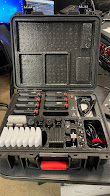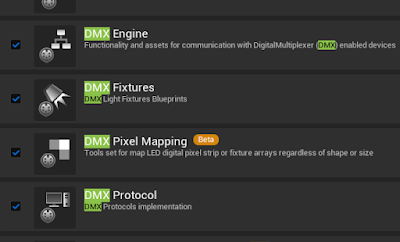A Look at LED Lights and Decoder

DMX decoder has finally arrived! I've taken a look at the pieces I have in hand to figure out how to connect everything together. First of all, the LED strip lights... The end of the strip light has 4 small pins to connect into an outlet (the white cable that came with the light strips). However, these small pins are too small and too close to each other to be plugged in to the decoder. Instead, professor Nick suggested that I cut a length of the light strip at the conductive points and solder a wire between the light and the decoder. I'm planning to try my hand at soldering later this week. Here's a look at the decoder itself... There are 3 main outlets on the decoder: DMX, ethernet, LED channels. I will be connecting Gateway to Decoder's DMX In. For now, DMX Out will not be used. I'm not sure what to use the ethernet ports for... Maybe in a different setup, they could also work for DMX data??? For the LED strip, there are different input and output outlets. Input ...






